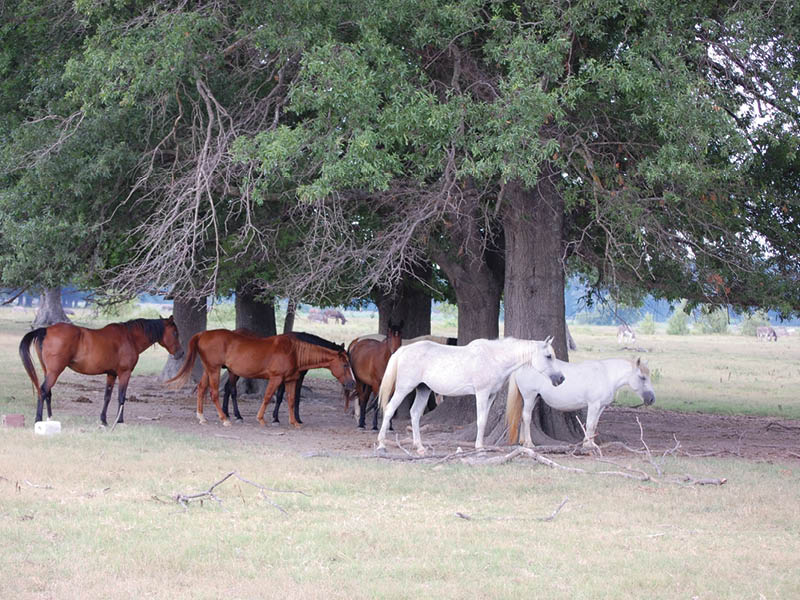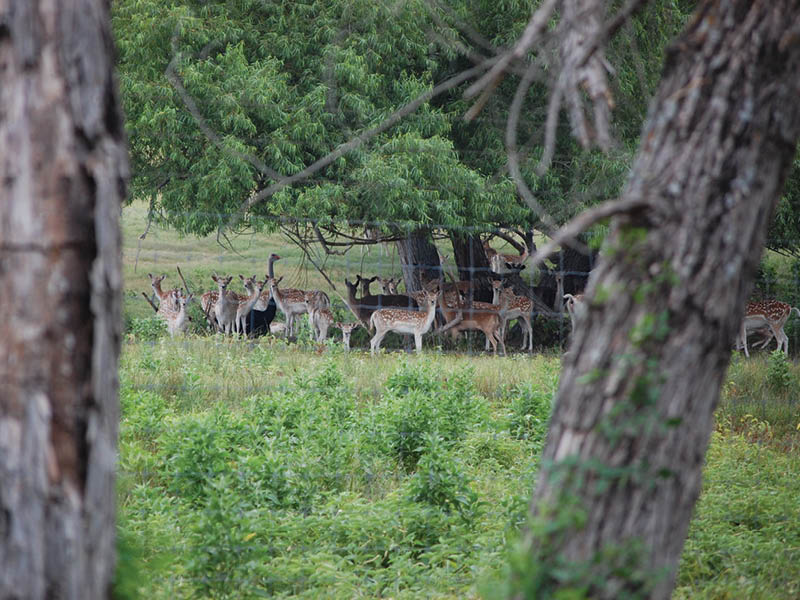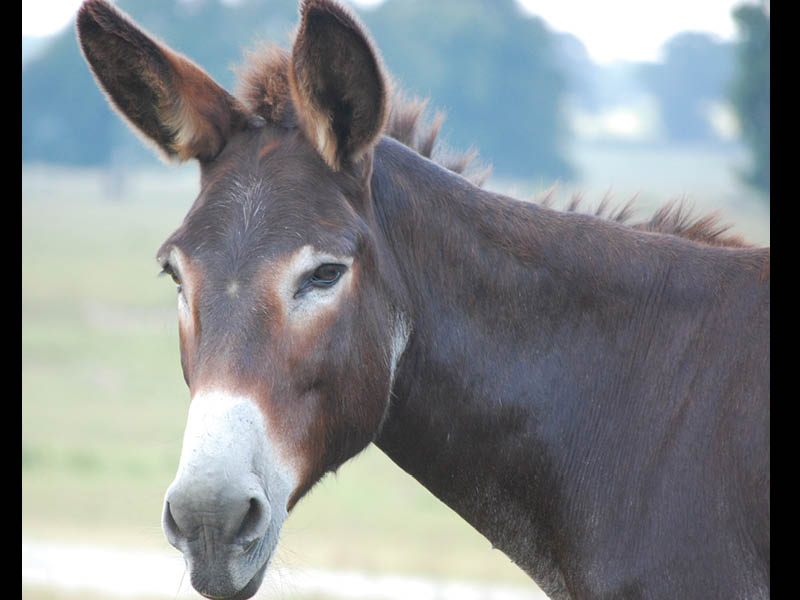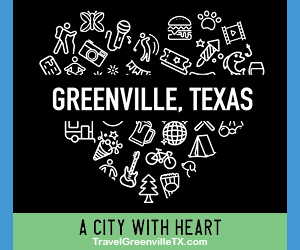By Tom Geddie
The Free Dictionary defines “sanctuary” as both a sacred place, as a place of refuge or asylum, and as a reserved area where animals, especially wild animals, are protected from hunting or molestation. It is a word often heard in discussions at the Cleveland Amory Black Beauty Ranch near Murchison. It is known as America’s largest animal sanctuary.
A plaque on the gate to the 1,310 acres of rolling hills quotes from the final lines of Anna Sewell’s classic children’s book Black Beauty, about a horse that is mistreated as it is passed from owner to owner before finally finding peace: “I have nothing to fear, and here my story ends. My troubles are all over, and I am at home.”
That novel so impressed Amory, a noted writer and critic described by The Humane Society of the United States as “the founding father of the modern animal protection movement,” that today, 15 years after his death, Black Beauty Ranch remains home to more than 1,000 animals of 42 species.

The ranch has four lakes and a dozen ponds and brooks. Many of these species — including chimpanzees, antelopes, a bison and a water buffalo, antelopes, an ostrich and an emu, red turkeys — and more than 500 horses and burros, run free within the fences; others, such as the tigers, bobcats, chimpanzees, are penned. Many were rescued from research laboratories, circuses, zoos, captive hunting operations, factory farming, and government round-ups.
The story of Amory’s rescue shows both the ranch’s determination and its figurative heart.
Amory and his Fund for Animals bought the first 85 acres in 1979 as a permanent home for 544 burros rescued from the Grand Canyon. Those burros faced extermination by the Bureau of Land Management after landowners complained the burros competed for scarce resources without contributing to the region. Amory hired ex-Vietnam helicopter pilots, using slings on the bottom of the helicopters, to pull every one of those burros — one at a time —out of the canyon without injuring any of them.
Ben Callison is director of Black Beauty Ranch after being a volunteer for eight years. He oversees 22 full-time employees, four interns, approximately 50 steady volunteers, and a stream of other volunteers.
Staff and some of the volunteers get to know many of the animals by name and habits.
Chimpanzees, for example, live as family groups in the wild, but must be penned — in big, roomy pens — at the ranch.
“In the wild, they get daily enrichment and social structure from that group, but once they are taken from the wild there is no way to put them back,” Callison said. “We give them as enriching an environment as possible, which is always second to a wild existence. Chimps are such highly social, intelligent creatures that the challenge is to constantly change their environments.”
Staff hangs “jolly balls” under some trees in the 800-acre horse and burro area, filling them with, for example, peanut butter or other treats; the animals sometimes use them like tether balls. Treats for the primates include sticks with honey and seeds on them; for the pigs, bags to rip open and get to special treats — all in moderation and as part of planned diets.
Some of the animals even, in their own ways, paint, with the pictures sold as part of fundraising efforts.
“The paintings are byproducts of our enrichment program,” Callison said. “For many years, painting is something all primate facilities have done, and we develop enrichment programs for every single animal. Why limit it to just chimps? We don’t force any of them, but we began trying enrichment with different animals. Some of them really enjoy it.”
Callison said painting — with nontoxic children’s paint — is one of the favorite activities of two female tigers which end up covered in the paint, and then groom each other. The scent is one of the fascinations. Callison said the ostriches are fascinated with the process, and that some of the horses paint, too.
“We put a little grain down on the canvas, and the horses push the paint around to make colorful images,” he said.

Black Beauty Ranch brings in animals from all over the country: locally, regionally, and nationally in cooperation with the Humane Society of the United States, the American Society for the Prevention of Cruelty to Animals, other animal welfare groups, sheriff’s departments, and others.
“We do our own investigations and rescues, and the Humane Society does its own, too,” Callison said. “When we do a seizure, we ensure there is a way to stop whatever scenario they came from, to stop the cruelty and neglect. Many times if somebody else saves a horse, it’s not stopping the abuser from getting another one. But we go through the legal process. Alex, the tiger that just came in, came from a guy who was a drug addict in Kansas and abandoned the animals in the back yard. We legally seize these animals, and we want to make sure we are helping the issue, not enabling somebody to just get another one.”
The Fund for Animals has also won legal actions to protect endangered species and prevent inhumane hunting and trapping practices.
A second facility on the Black Beauty Ranch grounds is the Doris Day Horse Rescue and Adoption Center, which rescues and rehabilitates abused and neglected horses to help place them in safe, permanent, loving homes. It is also affiliated with the Humane Society.
“Cleveland and Doris were very close friends and she had a dream to create the horse rescue and adoption center,” Callison said. “So she started that here two or three years ago. It’s the first-ever true adoption program we’ve had here because our own mission is sanctuary; once an animal is here, it’s here for life. With more than 500 horses, we love that, and they live well beyond the years anyone could expect them to live. But that means we have very limited intake. Now we can evaluate new ones for adoptability, seeing if they can be rehabilitated, trained, and adopted. Those that can’t because of medical, behavioral, or other issues go to sanctuary.”
With a $2 million annual budget, Black Beauty Ranch, a 501c3 nonprofit corporation, is totally funded by donations from the public.
While the ranch is not a zoo and is not open for regular public visitation, it holds open houses twice a year and sponsors a 5K “Freedom Run” every year. The next one is on October 12 and October 19; another will be next spring.
“The visitor center and gift shop will be open where people can learn about all the programs,” Callison said. “We will have walking tours for the farm animals and limited primate tours, plus tour buses and hay rides to see the remainder of property with staff staged at every single area to share the animals’ stories and issues, and what we are working towards.”
The Doris Day center is open every day except Sunday, and the ranch plans to eventually open its visitor center every day.
“Our mission at the center is to provide a home for these animals. We want to minimize the impact of people coming through the animals’ home,” Callison said.
A representative from Black Beauty Ranch will also be at the Ben Wheeler Book Fair November 30, selling copies of The Ranch of Dreams, which tells the center’s story; Amory’s The Cat Who Came for Christmas; and possibly other books.
For more information, go to www.blackbeautyranch.org or call 903.469.3811.




